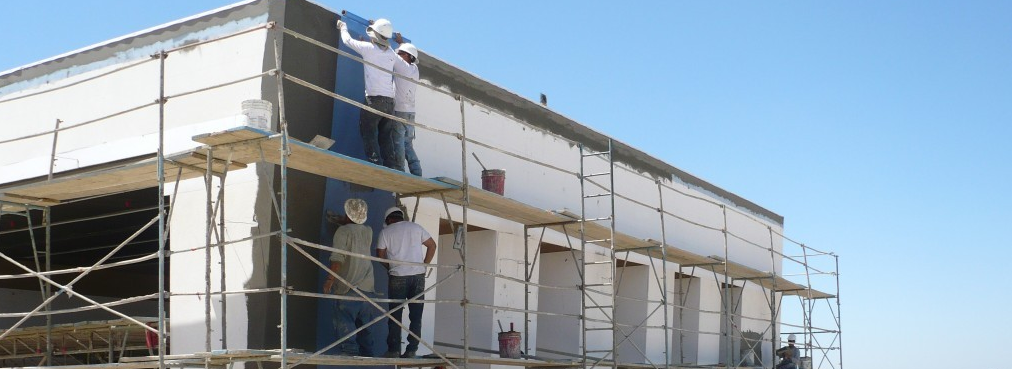The Difference Between EIFS & Stucco

Before you set about repairing the exterior of a building, it is important to know what kind of surface is in place. While this might seem like a simple point, it can get a little bit complicated when it comes to EIFS vs. stucco. These two surfaces will look extremely similar to the untrained eye, and in fact, they can even confuse an experienced contractor from time to time. Obviously, it is important to know which one has been used on a given building, so you will want to be armed with knowledge that can help you differentiate between the two.
What is EIFS?
Most people are familiar with stucco, but EIFS is a system that is not as well-known by those outside of the business. EIFS stands for Exterior Insulation and Finish System, and it can produce a finished product that looks quite similar to stucco. Usually EIFS includes a polymer-based finish coat, which comes in a number of different texture and color options.
Eyes Can Deceive
You might think you would be able to tell the difference between EIFS and stucco simply by getting up close to the surface to take a good look. Unfortunately, that often isn’t enough to get the job done. The finish coat that is used in both of these systems is remarkably similar, so there might not be anything on the surface that tells you which of the two has been used. In order to make that determination with any degree of confidence, you will likely need to get ‘hands on’ with the surface.
A Couple of Tests
When in position to actually touch the surface, try tapping on it while listening closely for the sound that is produced. Is the sound ‘hollow’ or does it sound ‘solid’? If you are getting a hollow sound, you are most likely dealing with EIFS. The solid sound, on the other hand, is usually a product of stucco.
Listening for a hollow or solid sound is often enough to inform you as to the surface that has been used. However, that test will not always be conclusive. If you are still unsure, try pressing your thumb against the surface. Does the surface depress or ‘give’ a little bit while you press? If it does, you are working with EIFS. Stucco feels very much like concrete when you push against it, so it will not give at all under light pressure from your thumb.
As one last indication, you may notice cracks in the surface running throughout the wall – if that is the case, you are looking at stucco. Generally speaking, EIFS will not crack due to the specifics of its construction. So, if you are unable to get to the surface in order to feel it for yourself, you might be able to make a determination using that visual guideline.
It is important to be confident when deciding whether a wall is stucco or EIFS, so use the information above to your advantage. Now that you know how to differentiate these two effectively, the process should be quick and easy any time this question comes up.
